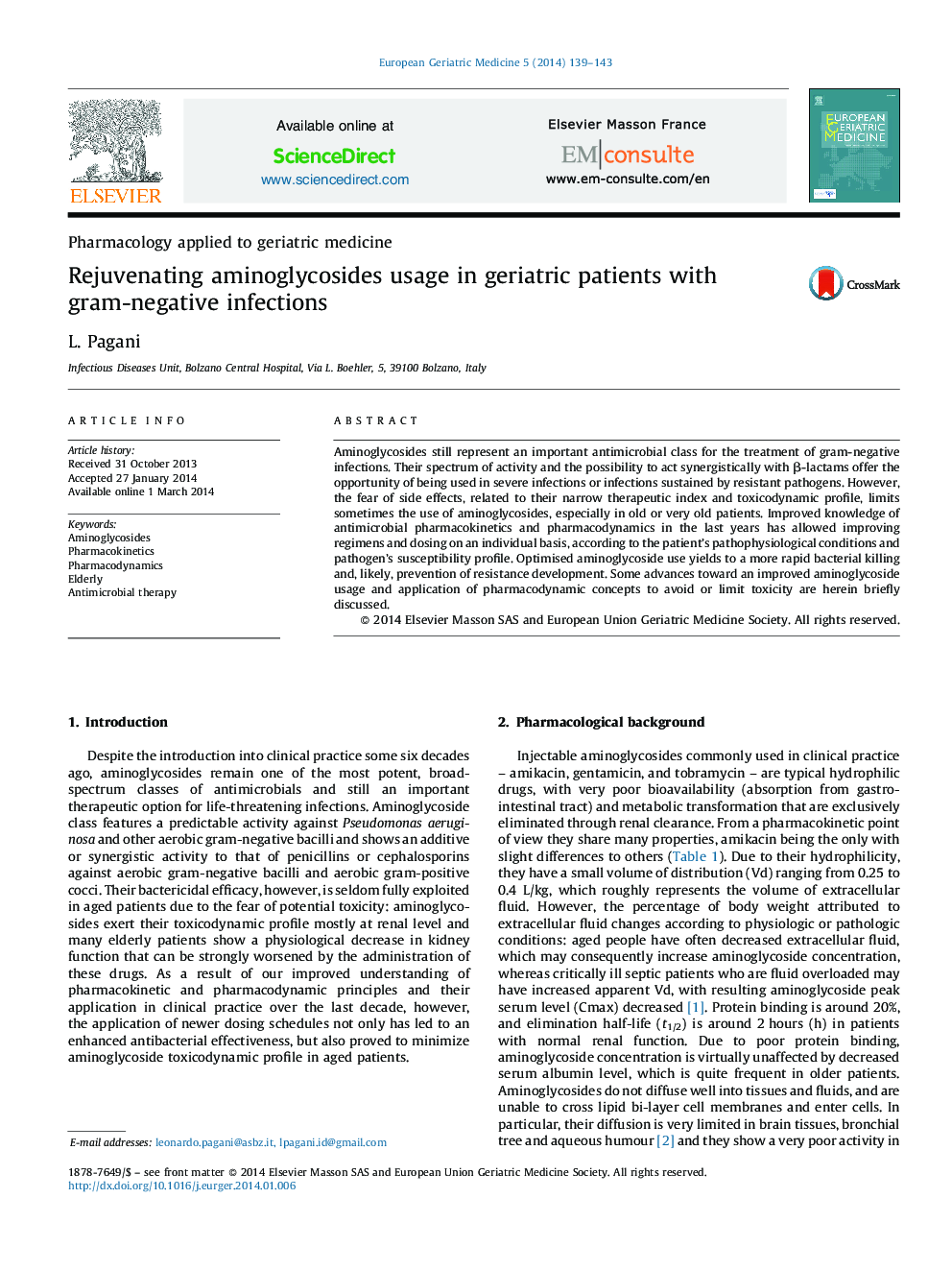| Article ID | Journal | Published Year | Pages | File Type |
|---|---|---|---|---|
| 3324306 | European Geriatric Medicine | 2014 | 5 Pages |
Aminoglycosides still represent an important antimicrobial class for the treatment of gram-negative infections. Their spectrum of activity and the possibility to act synergistically with β-lactams offer the opportunity of being used in severe infections or infections sustained by resistant pathogens. However, the fear of side effects, related to their narrow therapeutic index and toxicodynamic profile, limits sometimes the use of aminoglycosides, especially in old or very old patients. Improved knowledge of antimicrobial pharmacokinetics and pharmacodynamics in the last years has allowed improving regimens and dosing on an individual basis, according to the patient's pathophysiological conditions and pathogen's susceptibility profile. Optimised aminoglycoside use yields to a more rapid bacterial killing and, likely, prevention of resistance development. Some advances toward an improved aminoglycoside usage and application of pharmacodynamic concepts to avoid or limit toxicity are herein briefly discussed.
